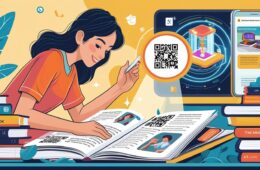
16
Jun, 2025
The ‘Connected’ Textbook
How to Connect the Print and Digital Using QR Codes and AR-lite Experiential Learning The printed textbook is the mainstay of education and a familiar, printed representation of knowledge, that many of us are accustomed to. It is one thing to change with the times in a hyper-digital world, but…



